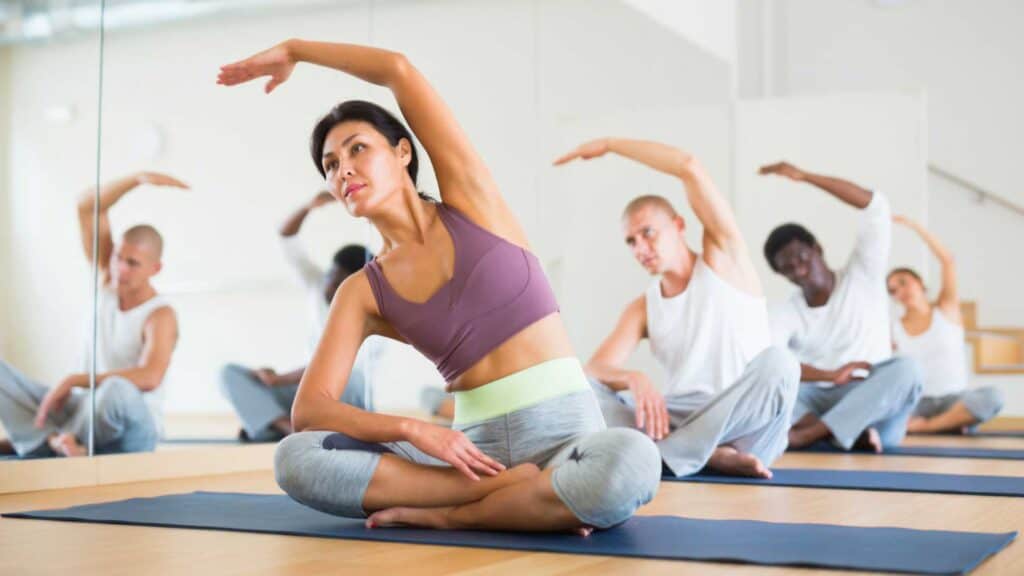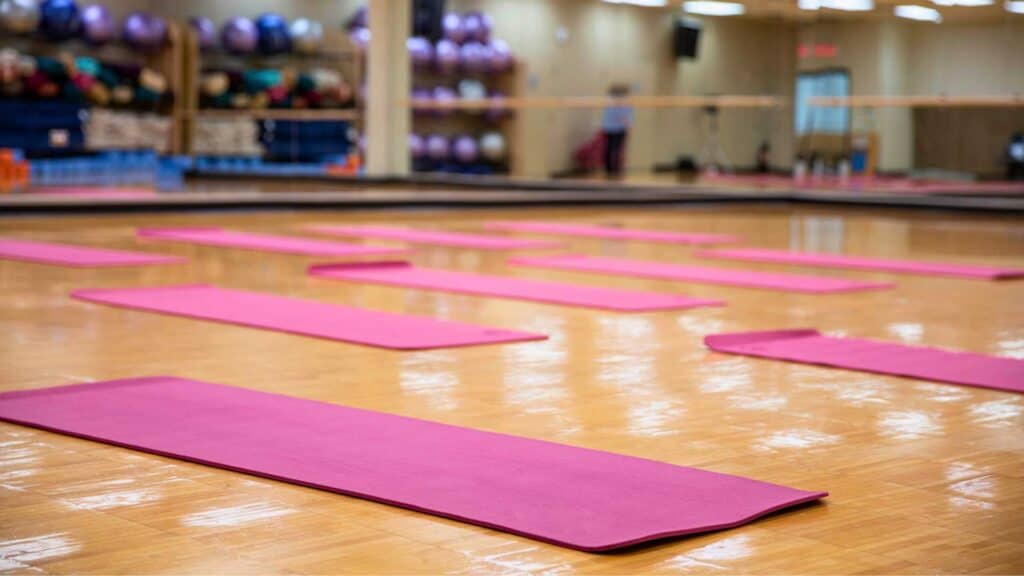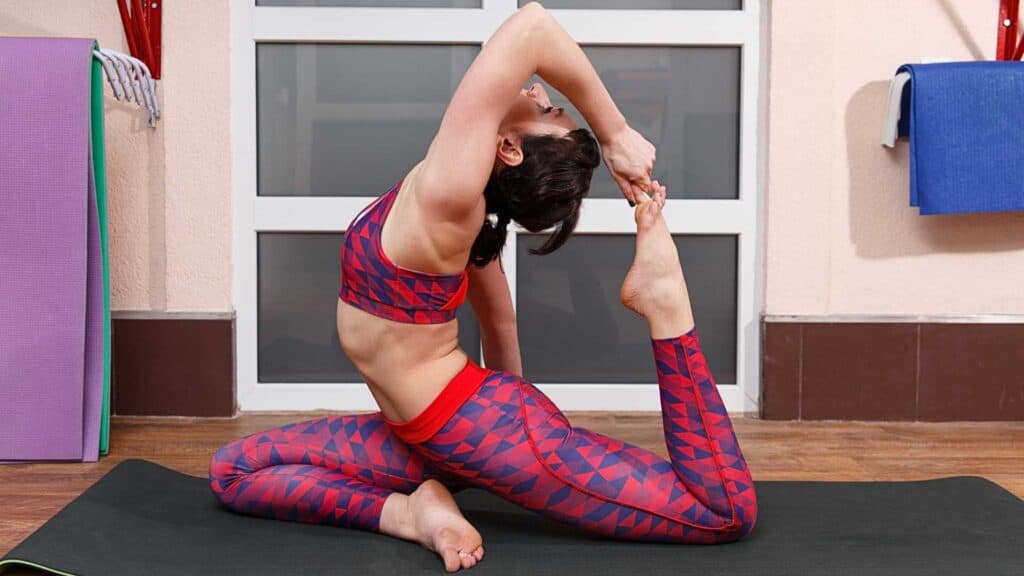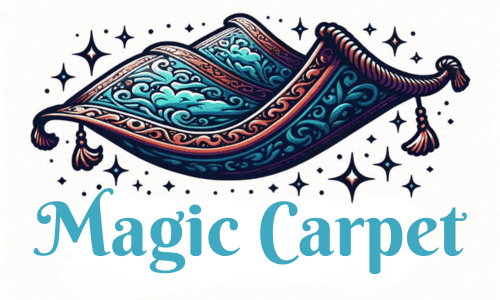Yoga, an ancient practice rooted in Indian philosophy, has various paths designed to enhance physical, mental, and spiritual well-being. Among these paths, hatha and raja yoga are two prevalent styles that draw numerous enthusiasts.
Hatha yoga emphasizes physical postures and breathing techniques, serving as a stepping stone to body mastery. Through its practices, you can hone your bodily strength and flexibility, preparing you for meditation and higher practices of yoga.
Raja yoga, known as the “royal path,” prioritizes mental control and the pursuit of inner peace. Unlike hatha yoga, raja yoga focuses less on physical exercises and more on meditative practices, aiming for mental clarity and discipline.

It is often associated with the Yoga Sutras of Patanjali, which lays out an eight-limbed path towards the union of the individual and universal consciousness. This yoga includes the union of mind and spirit, guiding you towards self-realization and enlightenment.
Here, we will look at the differences (and the similarities) between Raja Yoga and Hatha Yoga.
Key Takeaways
- Hatha yoga focuses on physical postures and breath control to prepare for meditation.
- Raja yoga emphasizes mental discipline and meditation to achieve self-realization.
- Both paths are integral to the overall journey of yoga, offering physical and mental health benefits.
Fundamentals of Hatha Yoga and Raja Yoga

In exploring the landscape of yoga, you’ll find Hatha and Raja Yoga to be distinctive paths with their own set of techniques and goals. Both are highly regarded for their unique contributions to the practice and tradition of yoga.
Core Principles of Hatha Yoga
Hatha Yoga is a physical entry point to the vast world of yoga. This branch emphasizes the importance of postures (asanas) and breath control (pranayama), which prepares your body for deeper spiritual practices.
In Hatha Yoga, you engage with movements designed to refine your body and master its energies, leading to balance and health. Here’s a brief look at its core elements:
- Asanas (Postures): Stabilizes and aligns your body, enhancing physical strength and flexibility.
- Pranayama (Breath Control): Regulates and directs vital life energy, promoting mental focus and calmness.
Hatha Yoga is often recommended for beginners as it lays the groundwork for advancing into other forms of yoga, nurturing your body and mind for further exploration.
The Hatha Yoga Pradipika is a classic text in Sanskrit that outlines the practice of Hatha Yoga, detailing asanas (postures), pranayama (breathing techniques), mudras (gestures), and meditation for advancing in one’s yogic journey
Essential Teachings of Raja Yoga
Raja Yoga, also known as the “royal path,” dives deeper into yoga’s mental and spiritual aspects. It is primarily concerned with mind control and aims for the highest state of consciousness or Samadhi.
Central to Raja Yoga are the Yoga Sutras of Patanjali, which outline an eightfold path (often called “Ashtanga Yoga”) to enlightenment:
- Yama (Moral Codes): Practice restraint through non-harming, truthfulness, non-stealing, celibacy, and non-covetousness.
- Niyama (Self-Purification and Study): Cultivate contentment, purity, self-study, and dedication to spirituality.
- Asana (Posture): Although less emphasized than in Hatha Yoga, physical postures in Raja Yoga facilitate meditation and mental focus.
- Pranayama (Breath Control): Similar to Hatha, but with a greater emphasis on supporting meditative states.
- Pratyahara (Sense Control): Withdraws the senses from external objects to reduce distractions.
- Dharana (Concentration): Single-pointed focus to steady and quiet the mind.
- Dhyana (Meditation): Continuous flow of cognition toward the object of meditation.
- Samadhi (Enlightenment): The ultimate goal, achieving unity with the object of meditation, is often associated with profound peace and joy.
While Raja Yoga can be more introspective and demanding, it is also an enriching path that offers significant insight into the nature of your mind and consciousness.
Practices and Techniques

Hatha and Raja Yoga offer distinct practices and techniques for enhancing physical and mental well-being. Understand each path’s specific methods to guide you toward balance and self-realization.
Typical Hatha Yoga Practices
In Hatha Yoga, your practice primarily revolves around asanas (physical postures) and pranayama (breath control). This branch of yoga gently prepares your body for deeper spiritual practices by emphasizing physical health and mental focus. Key techniques include:
- Asanas: Regularly performing asanas can improve your flexibility, strength, and posture.
- Pranayama: These breathing exercises are meant to assist in mastering the life force, or prana, increasing your lung capacity and calming your mind.
- Mudras and Bandhas: Subtle gestures (mudras) and locks (bandhas) channel energy through the body, aiding in the arousal of kundalini energy.
Integrating these practices aims to create a stable foundation for meditative states and the exploration of the subtle energies within you.
Raja Yoga Paths and Methods
Raja Yoga, often referred to as the “royal path,” involves a comprehensive approach to yoga that includes the ethical disciplines of the Yamas and Niyamas and deepening states of meditation.
Following the guidance of Patanjali’s Yoga Sutras, Raja Yoga is structured around eight limbs that form a pathway to enlightenment:
- Yamas (abstinences)
- Niyamas (observances)
- Asana (posture)
- Pranayama (breath control)
- Pratyahara (withdrawal of senses)
- Dharana (concentration)
- Dhyana (meditation)
- Samadhi (absorption)
In Raja Yoga, you would emphasize pratyahara to withdraw your senses from external distractions, leading to dharana, the practice of single-pointed concentration. Once dharana is achieved, you can engage in dhyana, profound and continuous meditation, moving toward the ultimate goal, samadhi, a state of complete unity with the object of meditation and a sense of oneness with all existence.
Physical and Mental Health Benefits

When exploring yoga, you’ll find that Hatha Yoga enhances your physical well-being, while Raja Yoga fosters mental and spiritual growth. Both forms contribute significantly to health and well-being, but they do so through different approaches.
Hatha Yoga for Physical Well-Being
Hatha Yoga is a nurturing practice that focuses on physical postures and breathing to bring balance and health to your body. Regular practice is known to:
- Enhance muscle tone and flexibility.
- Improve respiration, energy, and vitality.
You’ll also be working on purifying your body, aiming for a balance supporting the awakening of the Kundalini. This energy is said to lie dormant at the base of your spine.
Raja Yoga for Mental and Spiritual Growth
Raja Yoga takes you on a journey into the mind, emphasizing meditation and self-discipline. With its practices, you can expect to:
- Attain greater mental clarity and control.
- Experience inner peace and heightened spiritual awareness.
This path can contribute to the ultimate goal of human life—self-realization, where you achieve union with higher consciousness.
Philosophical Foundations

The philosophies of Hatha Yoga and Raja Yoga serve as guiding principles, illustrating the diverse methods towards self-realization in yoga practice. Understanding these philosophical underpinnings can significantly enhance your yoga journey.
Hatha Yoga Philosophy
Hatha Yoga’s philosophy centers on the balance and mastery of the physical body and its subtle energies as a means to spiritual elevation.
You’ll discover that Hatha Yoga emphasizes the importance of asana (postures) and pranayama (breath control) as tools to achieve samadhi, a state of meditative consciousness. The practice aligns with the Tantric Yoga philosophy, where the body is seen as a vessel for the divine.
Raja Yoga and the Eight-Limbed Path
Raja Yoga, often called the “king of yogas,” integrates the mind and consciousness and is based on Patanjali’s Yoga Sutras. You’re looking into a more contemplative path that consists of the Eight Limbs of Yoga, which guide you towards samadhi:
- Yama (ethical standards)
- Niyama (self-discipline)
- Asana (Hatha Yoga overlaps here)
- Pranayama (Hatha Yoga overlaps here)
- Pratyahara (withdrawal of senses)
- Dharana (concentration)
- Dhyana (meditative absorption)
- Samadhi (bliss or enlightenment)
In your Raja Yoga practice, you explore these stages to purify the mind and focus on mental and spiritual growth, culminating in the unity of the individual self with the universal consciousness.
Paths to Self-Realization and Enlightenment

Exploring the paths of Hatha and Raja Yoga reveals unique journeys toward the ultimate aim of self-realization. Although different in their approach, these practices both lead to a state of pure consciousness.
Hatha Yoga Aims and Outcomes
Hatha Yoga is your entry point to balancing the mind and body through physical postures and breathing exercises. Its purpose is to prepare you for higher meditation and consciousness.
As you engage in Hatha Yoga, you work towards kaivalya. This is the separation of Purusha (pure consciousness) from Prakriti (matter) and the achievement of a state of spiritual liberation known as moksha.
- Aims:
- Balance and purify the body and mind
- Prepare for deeper spiritual practices
- Outcomes:
- Physiological and psychological benefits
- Paves the way for Raja Yoga
Raja Yoga’s Ultimate Goal
Raja Yoga emphasizes meditation and moral principles. It is often referred to as the “royal path” to enlightenment.
This path guides you through ethical disciplines to attain self-realization and understand Brahman, the ultimate reality.
Your mastery in Raja Yoga leads to samadhi, the ultimate state of union with the divine consciousness.
- Ultimate Goal:
- Achieve samadhi, the state of pure consciousness where you become one with the universal self
- Distinct focus on:
- Ethical disciplines (yamas and niyamas)
- Meditation techniques to control the mind and senses






